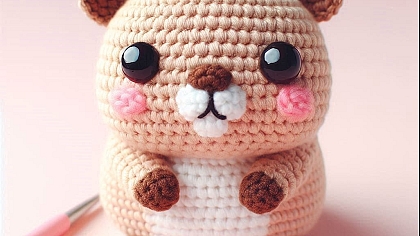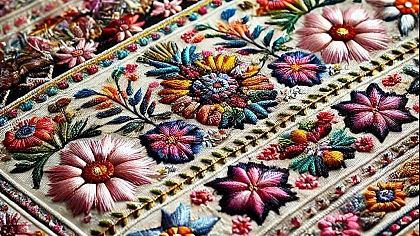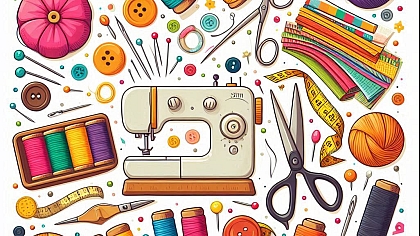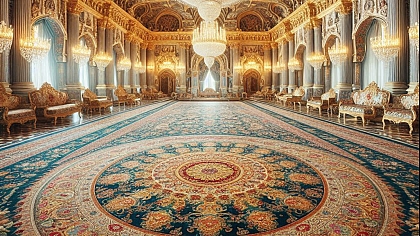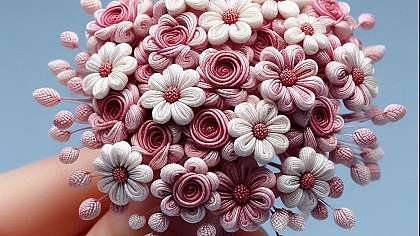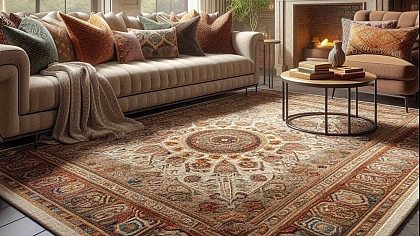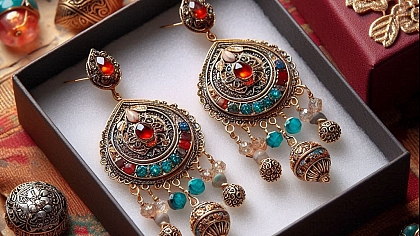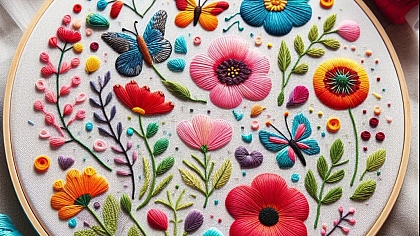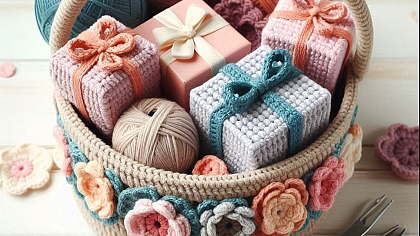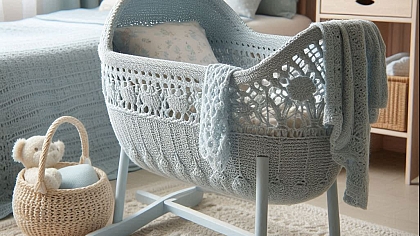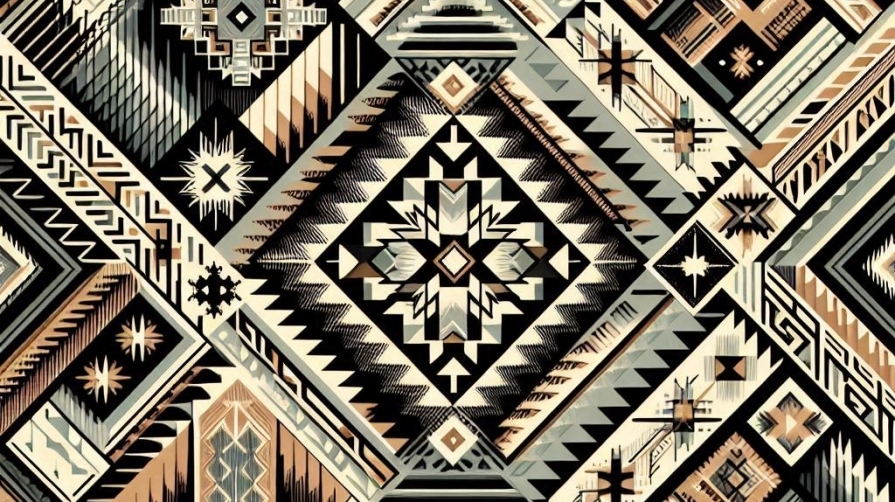
Threads of Creativity: Unique Weaving Patterns to Try
Weaving has long been an integral part of human culture, a practice that binds not just threads but stories, histories, and traditions. It’s an art form that spans centuries, regions, and civilizations. From the intricate tapestries of ancient Persia to the bright, geometric designs of the Navajo, weaving serves as a tactile expression of creativity, one that continues to evolve. For those looking to explore new avenues of expression or refine their techniques, trying out unique weaving patterns can open the door to a deeper, more personal connection to this age-old craft. In this article, we will unravel the magic of some distinctive weaving patterns, examining their structure, aesthetics, and the emotions they evoke through the art of creation.
The Allure of Twill Weaving

Among the first patterns many weavers master is the twill, known for its diagonal lines and versatile textures. But what makes twill so enchanting? It’s the endless variation that can be achieved with just a slight adjustment to the thread or loom setup.
Twill offers a rhythmic beauty, one that flows and shifts with each movement of the shuttle. Traditional twill is a 2/2 pattern, where two threads rise and two threads sink, creating that familiar diagonal ribbing. Yet within that simplicity lies endless complexity. By altering the treadling sequence or combining colors in new ways, you can transform a basic twill into something extraordinary.
For instance, herringbone and chevron are variations of twill that play with angles and direction, giving the woven cloth a bold, graphic quality. These designs evoke the sleekness of an arrowhead or the gentle undulation of waves, depending on the weaver's intention.
Twill also has a tactile appeal, the ridges and valleys it creates lending texture to the cloth. In finer yarns, the pattern can create a sleek, almost silky finish, while thicker threads amplify the dimensionality, offering a comforting warmth. It’s in these small details, the choice of yarn, the color palette, that twill reveals its adaptability and creative potential.
Double Weave: Layers of Intrigue
Double weave is a pattern that invites curiosity and experimentation. Unlike traditional weaving, where there is a single layer of cloth, double weave creates two layers simultaneously. This technique allows the weaver to design reversible fabrics, add pockets, or even create three-dimensional shapes within the textile.
The magic of double weave lies in its ability to create hidden spaces. One layer of threads floats above the other, and by carefully manipulating them, a weaver can bring one layer to the surface or tuck it away beneath the other. This process creates a complex interplay of colors and textures. Imagine weaving a landscape where the colors of a sunset shine on one side, while the deeper tones of twilight lurk just beneath. With double weave, you can bring to life the duality of nature, art, and emotion in every piece.
Learning to weave double layers opens up a world of possibilities. It’s ideal for scarves or blankets where warmth and a reversible pattern are desired. One side may display a vibrant plaid while the reverse showcases a subtle gradient of hues. The secret to mastering double weave is understanding the relationship between the two layers, and how they interact as you work.
This weaving technique also lends itself beautifully to geometric designs. Checkerboards, diamonds, and grids take on a new level of sophistication when rendered in double weave. It is as if the patterns are given depth and dimension, turning a flat surface into a dynamic, ever-changing landscape. The process of weaving two cloths at once challenges the weaver’s mind, keeping the craft engaging and fulfilling.
Lace Weave: Lightness in Form

For those who wish to introduce an ethereal quality to their weaving, lace weave patterns offer the perfect solution. Lace weaving involves creating open, airy spaces within the woven structure by strategically skipping warp or weft threads. This creates a fabric that is light, delicate, and full of intricate details.
Leno lace, one of the more traditional forms of lace weave, is achieved by twisting warp threads around each other as the weft thread passes through. This twisting motion creates small openings, resembling lacework, that are both decorative and functional. Leno lace can range from simple, grid-like patterns to more complex, organic forms, depending on how the threads are manipulated.
Another popular lace technique is Swedish lace, which combines areas of plain weave with lace motifs to create a structured, yet delicate fabric. This type of weave is often used for window coverings, table runners, or shawls, where the interplay between light and shadow enhances the beauty of the design.
The true magic of lace weave is in its transparency. The negative space within the pattern gives the fabric a lightness that feels as though it could float in the breeze. When woven with finer threads like silk or linen, lace weave creates a stunningly soft, translucent fabric. It’s the type of weaving that requires patience and precision, but the end result is always worth the effort, as the interplay of solid and open spaces adds depth to your work.
Overshot: A Play of Colors and Contrasts
Overshot weaving is a historical pattern that has deep roots in American colonial textiles. It combines a base structure of plain weave with a supplementary pattern weft to create bold, graphic designs. The name “overshot” comes from the way the weft yarns "shoot" over the warp threads to create intricate patterns that seem to float on top of the fabric.
This technique is often used to create large, bold patterns such as stars, flowers, or geometric shapes. The beauty of overshot lies in the contrast between the plain weave background and the intricate, often colorful, overlay pattern. Traditionally, overshot was woven with a simple color palette, using natural wool or cotton for the base and brighter yarns for the pattern. But modern weavers have embraced a wide range of colors and textures, experimenting with silk, linen, or even metallic threads to create truly unique pieces.
What makes overshot so fascinating is the way it plays with both color and texture. The pattern yarns tend to be thicker than the base yarns, adding a raised, almost embossed effect to the fabric. This tactile quality enhances the visual drama of the bold designs, creating a fabric that is as satisfying to touch as it is to look at.
For weavers who love to work with color and pattern, overshot is an excellent technique to explore. The designs can be as simple or as complex as you like, and the results are always striking. Whether used for a blanket, a table runner, or even a piece of wall art, overshot weaving makes a bold statement, combining traditional craftsmanship with modern creativity.
M's and O's: The Dance of Structure

M's and O's is a pattern that marries structure with creativity. The name comes from the way the threading of the warp and weft creates alternating bands of solid, structured weave (the M’s) and open, airy spaces (the O’s). This combination gives the fabric a unique, rhythmic texture that can be both visually striking and delightfully tactile.
This pattern is especially popular in Scandinavian textiles, where it’s used to create towels, blankets, and tablecloths. The alternating bands create a pleasing rhythm in the fabric, and the interplay of open and closed spaces gives the cloth a unique feel. The solid areas provide structure and stability, while the open areas add lightness and breathability.
M's and O's is a versatile pattern that can be woven with a variety of fibers. Wool creates a warm, cozy fabric perfect for blankets, while linen or cotton results in a light, breathable fabric ideal for summer garments or household linens. The pattern is also perfect for experimenting with color. The contrast between the solid and open areas can be emphasized with contrasting colors, or it can be made subtler by using shades within the same color family.
Weaving M's and O's requires careful attention to the warp and weft, but the results are always worth the effort. The pattern has a timeless quality, evoking a sense of history and tradition while still feeling fresh and modern.
Exploring Creativity Through Weaving

Weaving is an art form that offers endless opportunities for creativity and self-expression. From the rhythmic repetition of twill to the layered complexity of double weave, each pattern tells its own story and invites the weaver to explore new techniques and ideas.
By experimenting with different patterns, fibers, and colors, weavers can push the boundaries of their craft, creating fabrics that are as unique and individual as the people who weave them. Whether you are a beginner looking to learn the basics or an experienced weaver seeking new challenges, there is always something new to discover in the world of weaving.
Each technique described here—whether the bold contrasts of overshot, the lightness of lace weave, or the rhythmic dance of M's and O's—represents a different path through the world of threads. These patterns are not just designs; they are invitations to explore the tactile world of weaving, to feel the tension of the yarn beneath your fingers, and to marvel at the transformation of thread into fabric. In the process, you are not just weaving cloth, but also weaving creativity, history, and your personal story into every piece you create.

